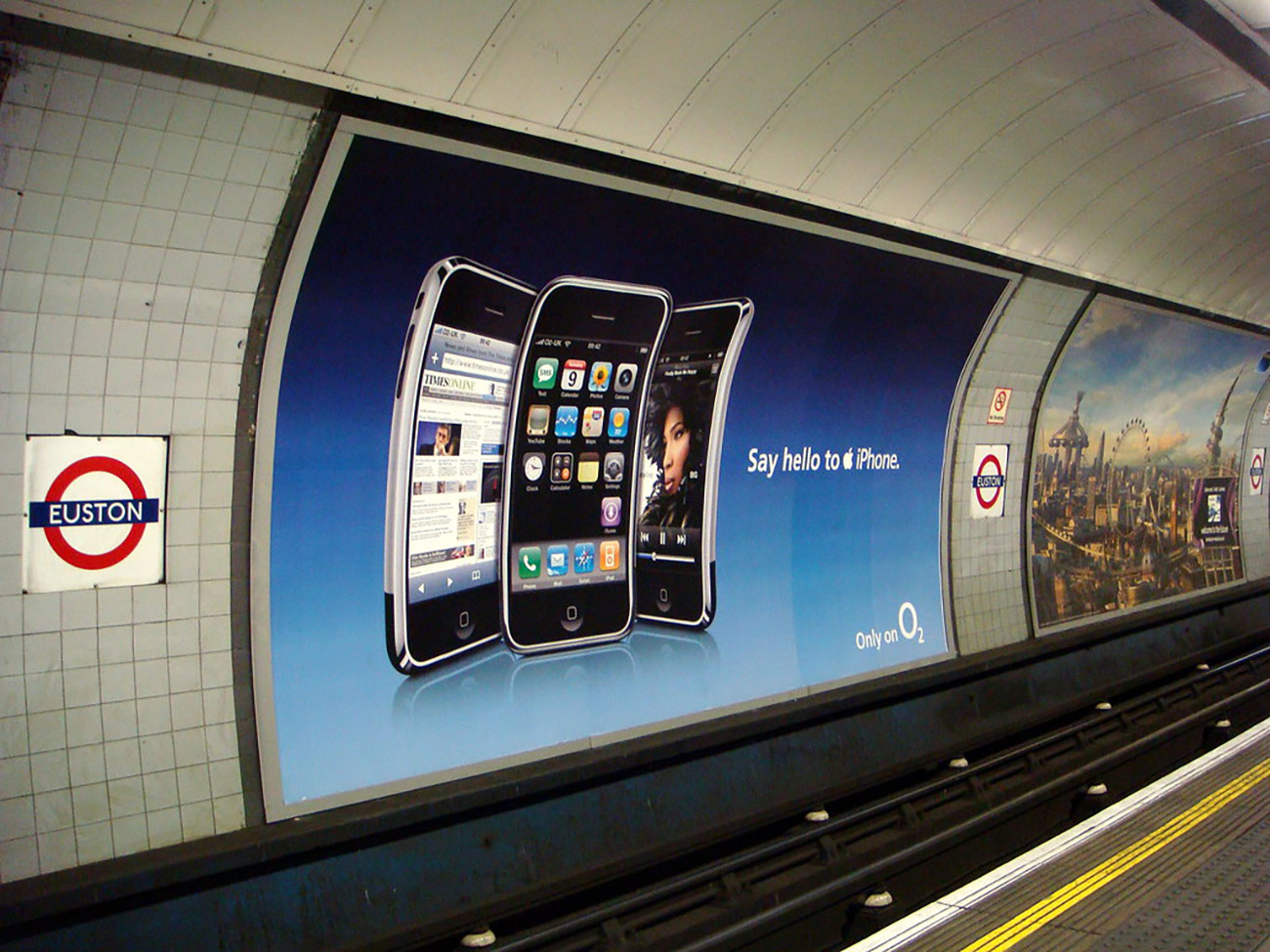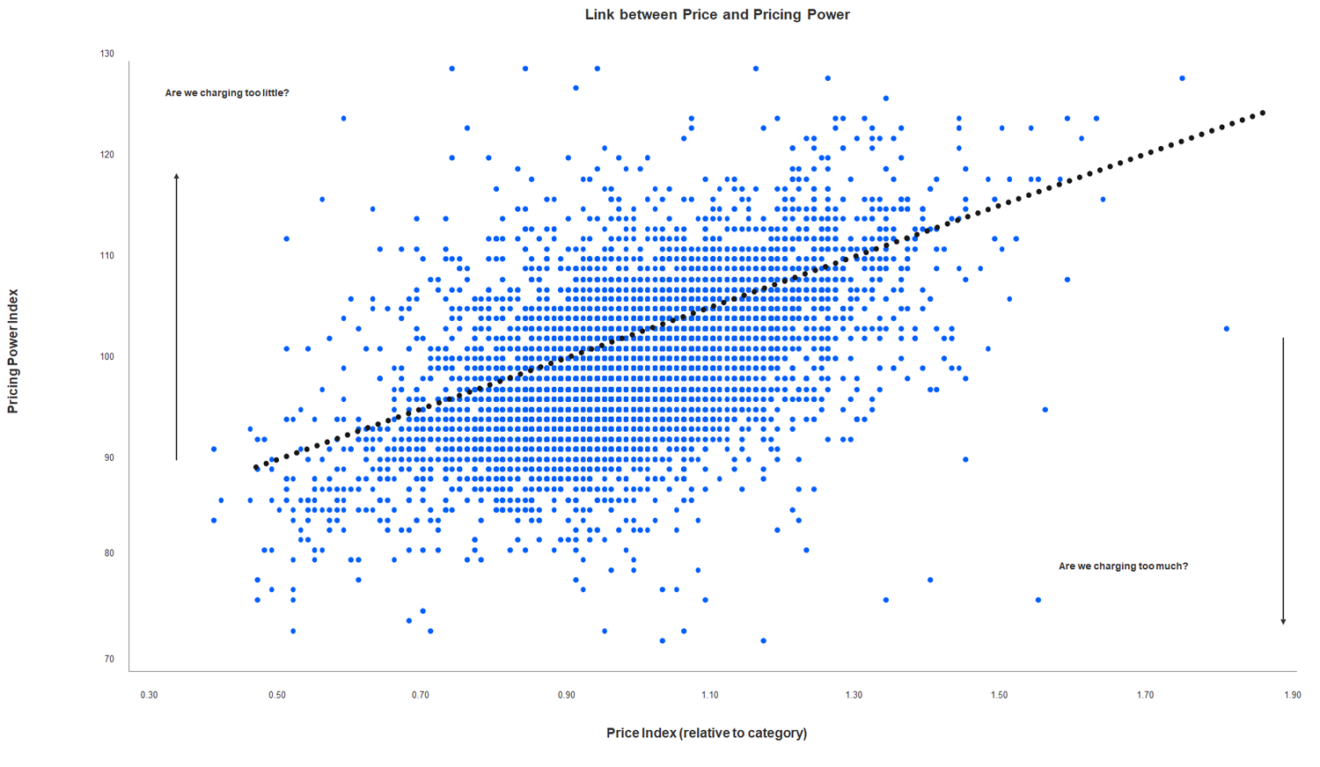Pricing Power: 4 marketing strategies for inflation-proofing your brand

What’s the cost of your product or service got to do with marketing? A lot of businesses might say ‘nothing’ – after all, the prices you charge are intrinsically linked to more tangible factors like the cost of raw materials and labor, business overheads and required profit margins.
But if this is true, how can we explain the fact that some of the world’s most famous brands can continue to raise their prices in an inflationary economy, with little or no impact on their market share? And why, in the very same economy, smaller brands often take a catastrophic hit when they raise prices, even as a last resort? The answer is pricing power.
But what exactly is pricing power? How is it linked to marketing? And how can your business leverage it to protect against rising costs in the future? Let’s take a look.
What is pricing power?
“The single most important decision in evaluating a business is pricing power. If you’ve got the power to raise prices without losing business to a competitor, you’ve got a very good business.” – Warren Buffett
To put it simply, pricing power refers to a company’s ability to raise prices in response to economic factors, without losing a significant proportion of their business. It’s a reflection of a brand’s influence and superiority in any given space, but also of the loyalty and trust they’ve built with their customers.

Apple: a masterclass in pricing power
For example, Apple is the world’s most valuable brand with a worth in excess of $1 trillion. Its products sit at the top end of the market on price, and have consistently risen in price year on year.
Since the launch of the 1st generation iPhone in 2007, the average RRP of Apple’s yearly iPhone releases has increased by 128%, with the average iPhone’s price going from £381 in 2007 to £869 in 2021.
In the same period, the average UK household salary only increased by 30.13% (in line with the 30.4% inflation rate increase since 2007). Meaning that the price increase of iPhones over time is more than 4X greater than the rate of inflation in the UK – and yet, more than half of UK smartphone users own one.
By contrast, the retailer John Lewis, which has been a stalwart of the British high street since 1864 (albeit not on the scale of Apple), has struggled to maintain its market share in the current economy, posting losses before tax of £234m in 2023 after raising prices on many of its goods in order to combat rising costs.
This is pricing power in action. When customers are squeezed economically, they make shrewd decisions about where to put their money. Brands with higher pricing power are the ones people are slowest to leave behind when cash is tight, usually due to a perceived reduction in their own status or quality of life/experience if they no longer buy that brand.

What’s marketing got to do with pricing power?
To put it very simply – everything. Marketing is the method by which brands inform, educate and persuade their customers in order to push them further down the sales funnel, turning browsers into buyers – and one-time buyers into loyal repeat customers.
Let’s take Apple as an example – there is no doubt that over the last 50 years, Apple has employed some of the brightest and best technical minds, and developed some of the most game-changing technology. The advent of iPhone in 2007 changed everything – without it, we might still be messing around with our BlackBerrys.
But without marketing, consumers might never have grasped the concept of Apple or the iPhone. Without campaigns like ‘Think Different’ or iPhone’s ‘Hello’ and ‘There’s an App for That’, consumers could never have understood the real offering here – not just the new technology, but the paradigm shift; the idea of a product as a portal to a new, better world where the choice is simple: buy in, or be left behind.
Apple’s entire reputation and resulting pricing power stands on the shoulders of those early marketing campaigns, which succeeded wildly in setting this brand apart as a trailblazer, thought leader and trend-setter. They and their subsequent iterations are the reason Apple is the world’s biggest brand today.

How can my brand leverage pricing power?
OK, so we’re not all big players like Apple with pioneering products, huge marketing budgets, enormous creative teams and complex, multi-channel strategies. But that doesn’t mean that the simple building blocks of pricing power can’t be applied to every marketing strategy and every business.
When it comes to building pricing power into your brand, it’s all about equity – the added value your product or service brings to the customer, both proven and crucially, perceived (for instance, an iPhone doesn’t enhance your life any more than a Samsung phone, but try telling that to an Apple devotee!)
Here are four ways every brand – large or small, B2B or B2C – can enhance its pricing power through the medium of marketing:
1. Leadership & Differentiation
Arguably the most important element of establishing pricing power is establishing a point or points of difference between your product or service and that of your close competitor.
Innovation is the key factor here, and typically stems from a profound knowledge of the target industry and target customer. Understanding what the market wants, and innovating to provide that in a way that is better, simpler or faster than the competition is the most powerful way to set your business apart.
Quality is also of vital importance – customers will always be willing to pay more for a product or service that is perceived as better than the competition, especially if it also delivers enhanced value in the long term. The fascinating psychology of pricing comes into play here, since products that are more expensive tend to be perceived as better to begin with – but in challenging economic conditions, they must be backed up by clear communication and proof of the value add through effective marketing.
Do it by: Clearly stating how and why your product or service is better; adopting a leadership position in your marketplace by demonstrating deep knowledge and understanding; going the extra mile on quality and service provision – sharing real customer stories as proof.
2. Value Proposition
Of course, it’s not enough to simply have a great product or service – you need to differentiate in the way you communicate about your offering too. Creative advertising campaigns, bold messaging and clear communication of your value proposition are vital if you don’t want all your efforts on innovation to get lost in the noise of a crowded marketplace.
It’s worth noting that brands like Apple don’t focus exclusively on the practical aspects of their value proposition – in fact, one of the things that differentiated the brand in the early days of its explosive growth was its ability to tap into softer concepts around status and desirability – the idea that their products could make your life better, more exciting or more aesthetically pleasing.
Do it by: Leveraging your customer’s hesitations and fears; taking an unconventional approach to messaging; sharing success stories.
3. Brand Image
Strong branding is a cornerstone of pricing power. You can have the best product or service in your sector, but fall short on brand image and consumers will at best be unconvinced that your brand can deliver on its promises, and at worst, might not notice you at all.
Logos, colour palettes and fonts are only one aspect of brand image – it permeates every aspect of your marketing communications from product packaging and printed collateral, through to the image you present on social media.
Holding yourself to impeccable standards is a must – insisting on high-quality image and video assets across all platforms, making sure all material produced is in alignment with your brand guidelines and tailoring your brand image to the needs and expectations of a clearly defined target audience are key.
This is especially important if your brand sits at the higher end of the market, or in a luxury space – think about the way that a brand like Zara presents itself in comparison to a competitor like H&M, despite the fact that there is very little difference between their offerings, borrowing tactics typically used by designer brands to present its products as better or more exclusive.
Do it by: Investing in quality visual branding, and ensuring this is religiously applied across all touchpoints; never compromising on assets.
4. Connection & Loyalty
Brand loyalty is another important driver of pricing power, because when people feel really connected to your brand, they are more reluctant to move away from it even when you increase your prices.
Human connection is at the root of all brand loyalty, so it’s crucial to ensure you are connecting with your target audience on that fundamental level. People still make purchase decisions with their hearts, not their heads – and they buy from people, not brands.
Effective communication of the positive values that define your brand helps your customer to understand your ‘why’. Powerful storytelling around your raison d’etre, passions and motivations stirs up an emotional response, allowing your audience to see their own priorities mirrored back to them in a symbiotic way that forges loyalty and trust. Look to campaigns like Dove’s ‘Real Beauty’ or Coca-Cola’s ‘Share a Coke’ for inspiration.
Do it by: Letting customers get under the skin of your brand; showing them your day-to-day, allowing them to meet your people, sharing challenges and stories.
Playing the long game
Pricing and profitability are unquestionably linked. In fact, out of all the levers one can pull (including sales, fixed costs and variable costs), an increase in price will have the greatest impact on profitability – but it’s crucial to know when to pull it.
The above strategies are not something brands can implement overnight and in truth, many companies overlook the development of these powerful assets (and avoid raising prices) in favour of the most overused of the 4Ps of marketing – promotion – because this is a faster way to increase sales in the here and now.
But by working closely with a full-service agency to align ALL aspects of your marketing strategy, you can build pricing power into your brand at the same time as investing in ‘quick win’ strategies, increasing short-term profitability while also underpinning your brand with the qualities it needs to thrive in an inflationary economy.
For help to strengthen your brand’s pricing power through holistic marketing strategy – with proven ROI in the immediate term – get in touch.